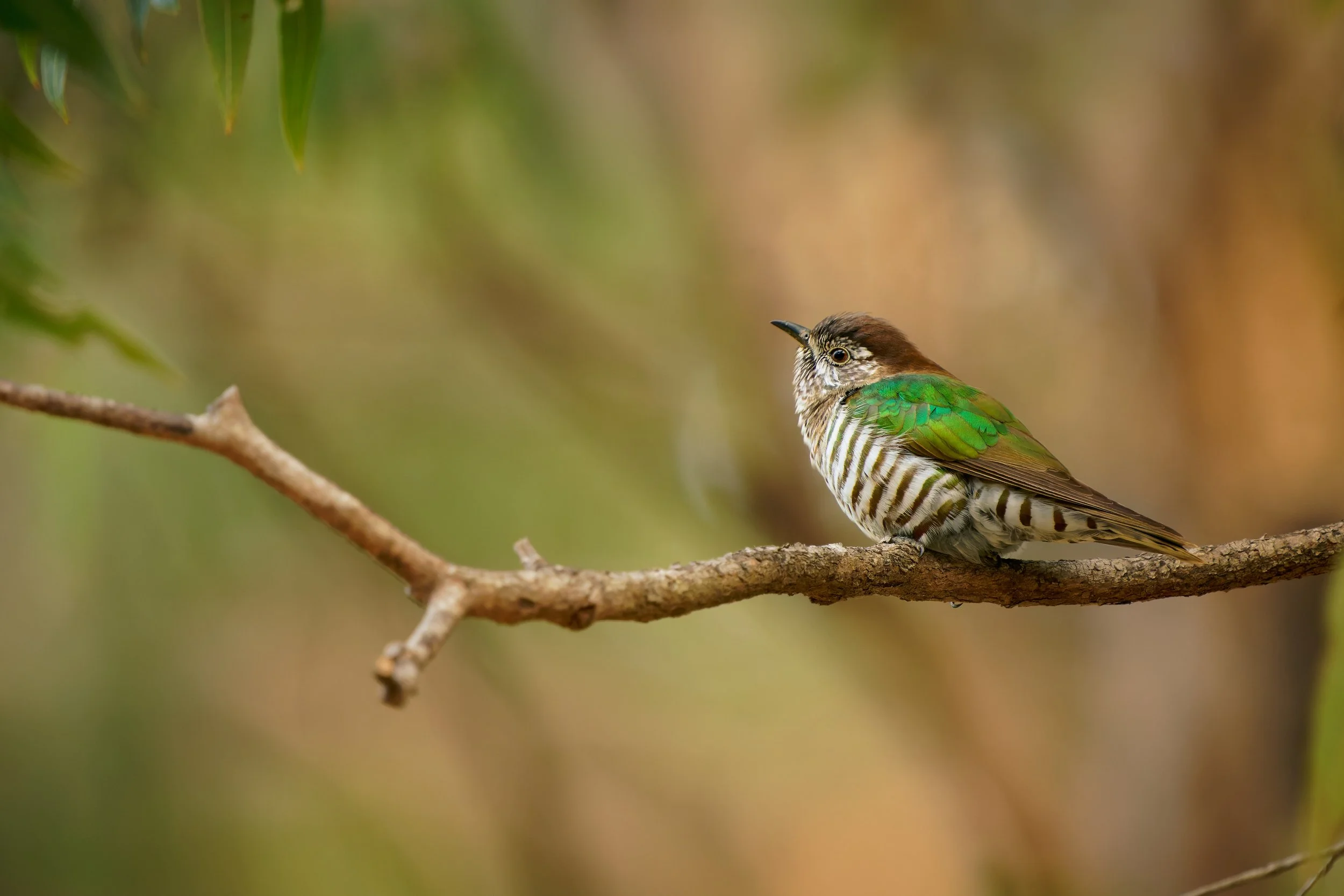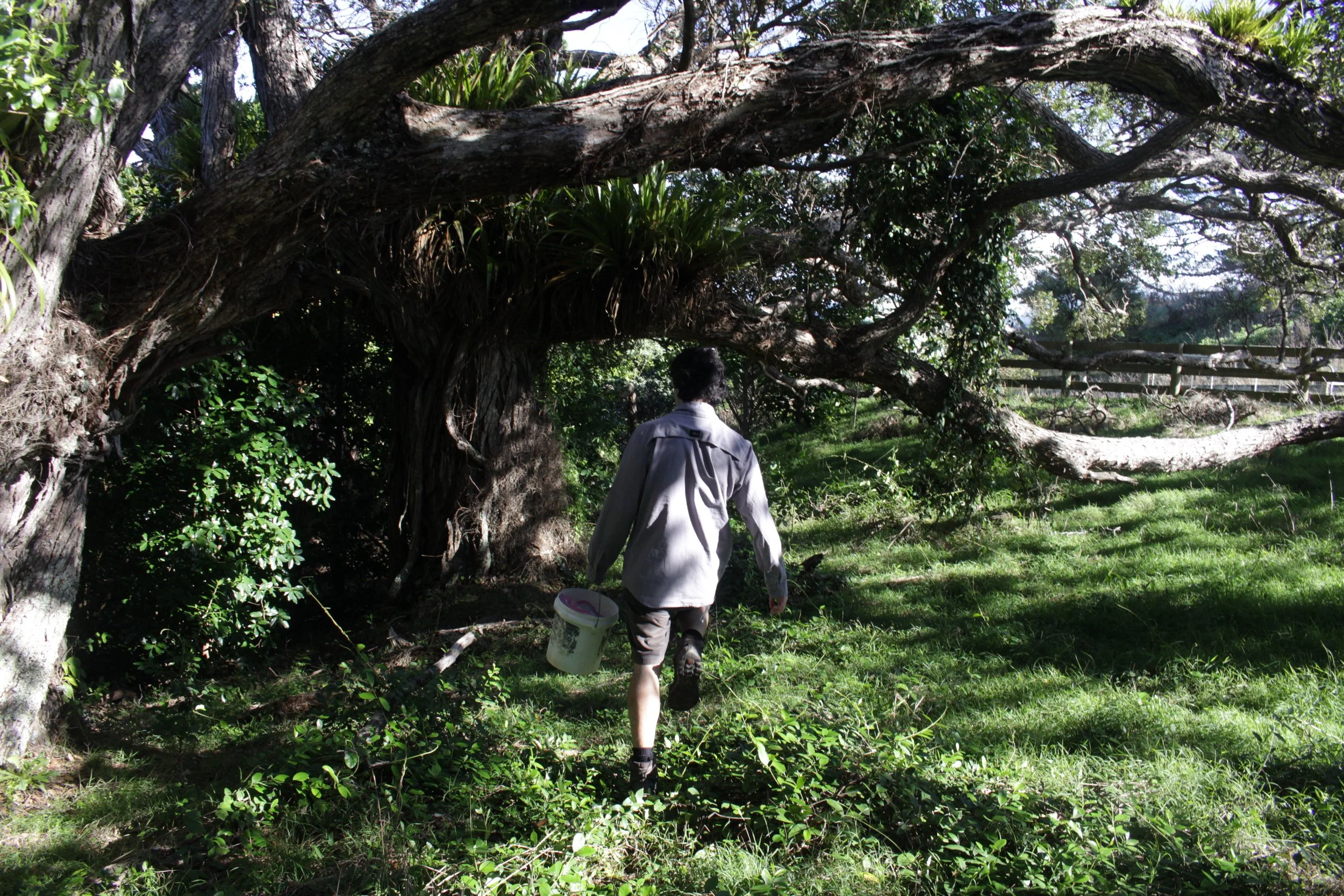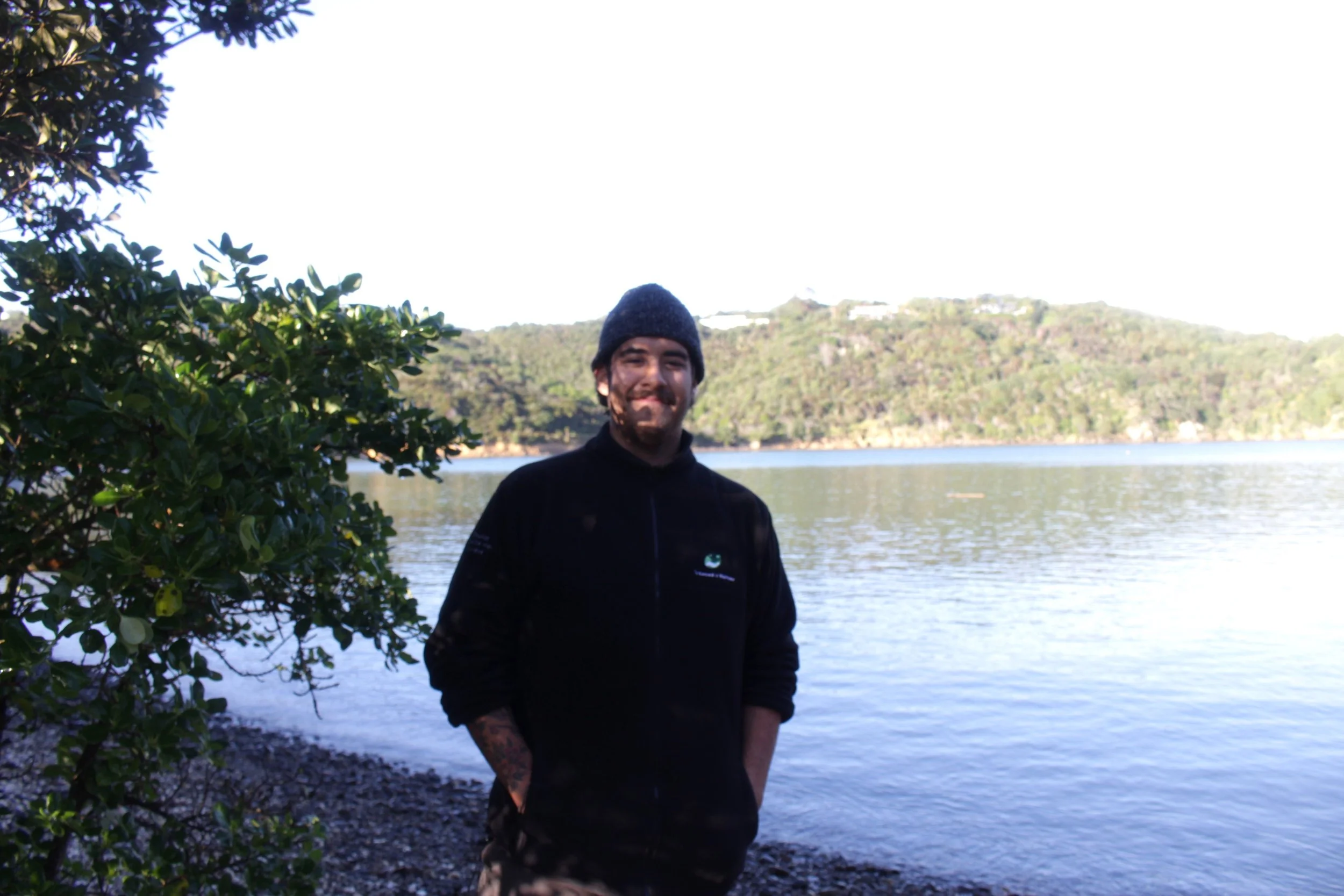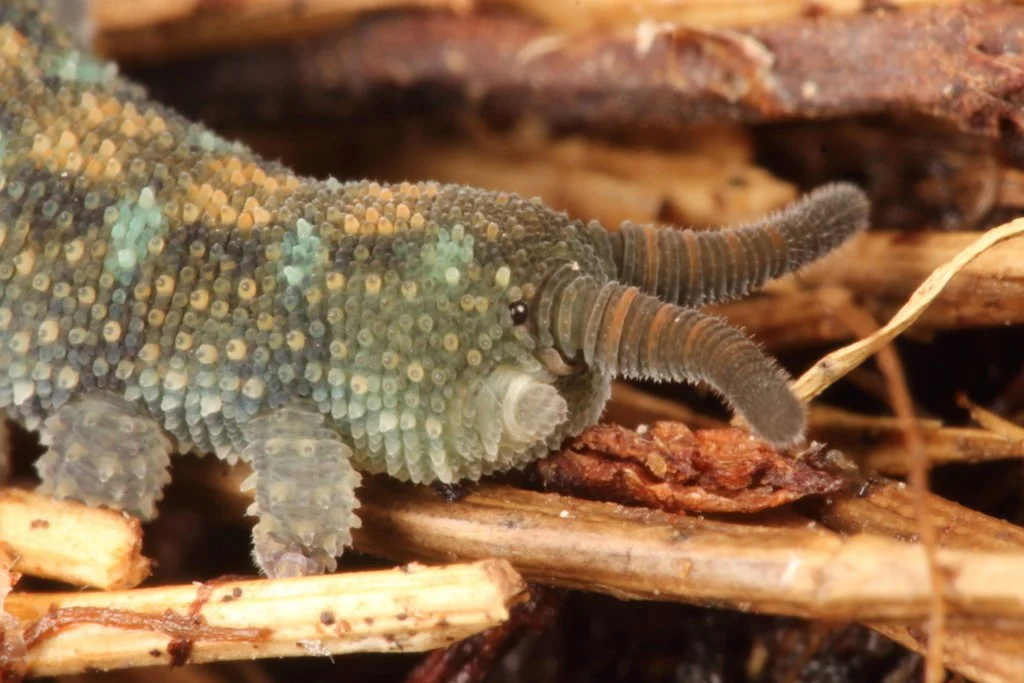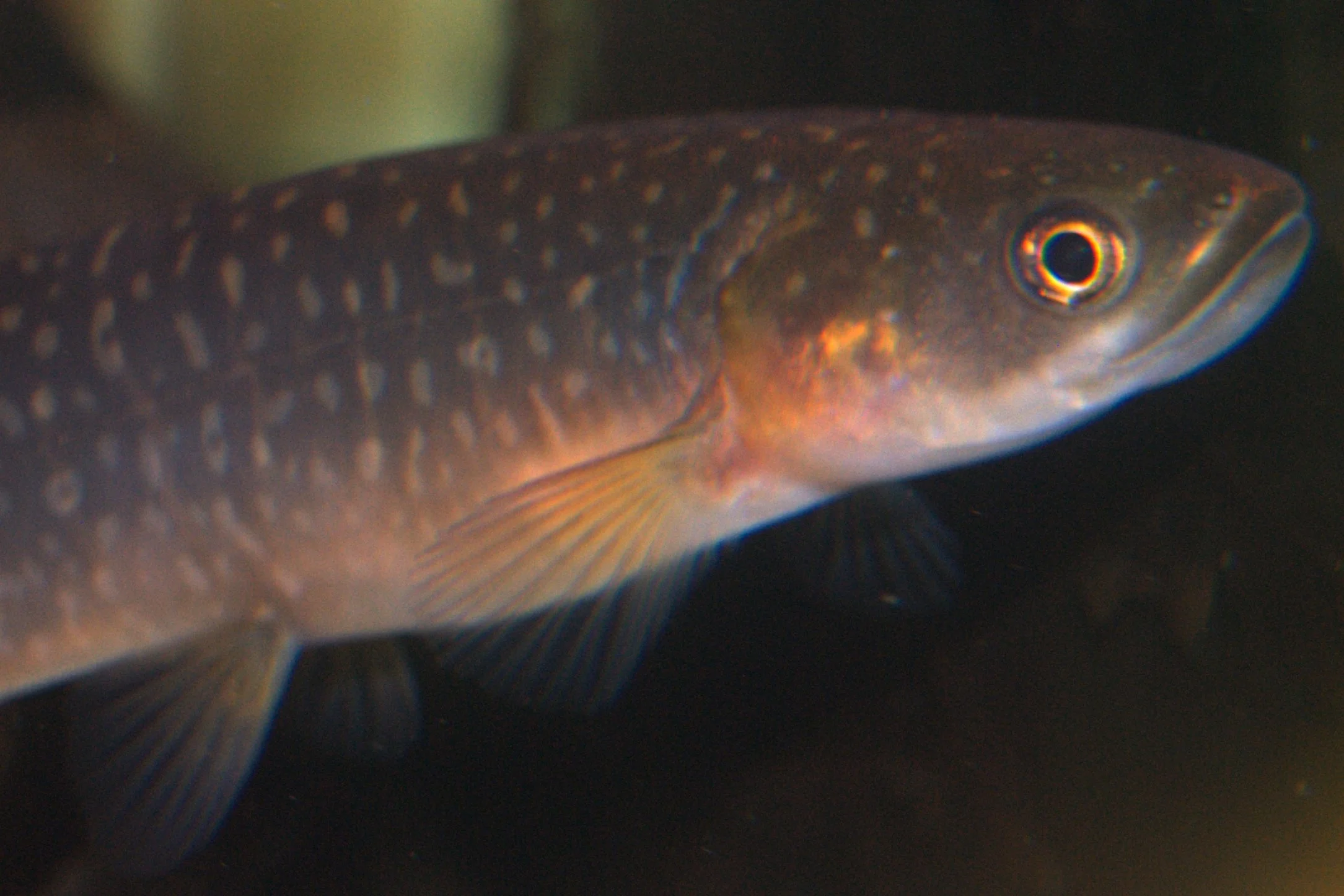
E koekoe te tūi, e ketekete te kākā, e kūkū te kererū
The tūi chatters, the kākā cackles and the kererū coo’s
Photo by Richard Tully
Waiheke wildlife hub
Discover more about the unique and fascinating wildlife that inspires and drives all of the mahi dedicated to its protection.
-

Backyard birding
Learn about Waiheke’s native birds with bird whisperer Tim Lovegrove, and how predator-free efforts help them thrive.
-

Waiheke Wildlife
Check out the gallery of Waiheke’s fascinating native species the communities working hard to protect.
-

Backyard bugging
Discover how you can make a difference in your backyard with these informative and entertaining videos about the insect world.
-

Learn more videos
Learn how to make Wētā motels, learn about predator free initiatives and much more
Latest news
Stay updated with the latest news on Waiheke’s conservation efforts
Jack’s Blog III - Conservation across continents
Having lived between the rugged peaks of the Colorado Rockies and the lush, coastal forests of Waiheke Island, Aotearoa New Zealand, I've experienced two vastly different, yet equally passionate, approaches to protecting our natural world. While my life in Colorado taught me about securing land against development and managing coexistence with large wildlife like bears and elk, my time on Waiheke with Te Korowai revealed a profound focus on restoration and healing—eradicating invasive predators to bring an entire ecosystem back into balance. This journey across continents has shown me that conservation isn't a one-size-fits-all practice; it's a dynamic story deeply shaped by place, culture, and history, offering powerful lessons that can bridge global understanding and strengthen local action everywhere.
Tildes Talks - The Shining Cuckoo
Each spring, a tiny traveller, the shining cuckoo or pīpīwharauroa, returns to Aotearoa after a 4,700-kilometre flight from the Pacific, a remarkable journey for a bird that weighs less than a letter. Its piercing call rings through the bush while its green-bronze feathers keep it almost invisible, and its life story is just as astonishing: a master of disguise that slips its egg into a grey warbler’s nest, a fearless feeder on toxic caterpillars, and a time-honoured sign for planting kūmara. Discover the secrets of this elusive bird, and how a simple window decal can help protect it - in the full article.
Joining Waiheke’s stoat-fighting heroes - Jacks Waiheke Experience #2
Trading mountains for beaches & bush tracks, 22-year-old Jack spent the winter chasing stoats and hauling traps across Waiheke Island. Days began with a quiet hui and end caked in mud, scented faintly of rabbits and rotten eggs—but every step feels worthwhile. Alongside Te Korowai’s trapping team, he discovered the thrill of conservation in action: scrambling through gorse, lifting trap lids with suspense, and learning from seasoned trappers who share a single mission—to make Waiheke predator-free. It’s exhausting, often unseen work, but each muddy bootprint edges the island closer to a historic ecological victory. (Pic: Te Ata, Stoat Trapper)
From Boulder to the Bush: Jack's Waiheke Experience
The unique wildlife of Waiheke…and Colorado!
Waking up to the cool, water-laden air of Waiheke is an experience I never want to leave. Each morning, I’m greeted by the gentle lapping of waves against Palm Beach, the sweet chatter of Tūī and Kākā, and the quiet rustling of fern leaves... As my time on Waiheke reaches its end, I find myself holding tightly to the sounds, scents, and colors that have become so familiar. I will miss the tranquility of the motu, which has welcomed me at the start of each new day. I will miss the vibrant, ever-changing natural landscape that seems to embody the spirit of the island itself. But most of all, I’ll deeply miss the people—those so deeply connected to the energy of Waiheke, whose fierce dedication to protecting its uniquely charming and vitally important native wildlife has left a life-long impact.
Tildes Talks - The amazing Velvet Worm |Ngākeoke
Meet the ngākeoke, also known as the velvet worm — a living fossil that has remained almost unchanged for over 500 million years. With their velvety skin, curious mix of worm- and insect-like traits, and extraordinary hunting tactics, these ancient creatures are some of Aotearoa’s most fascinating hidden residents.
Imagery via iNaturalist, Jacob Littlejohn (jacobl)
Tildes Talks - Rails, Giants, and Ghosts: Evolution on our Isolated Island
Aotearoa has been a land apart for millions of years, this has led to some remarkable examples of evolution driven by the environment - such as Dwarfism & Gigantism. The evolution of Rails on Aotearoa has been particularly fascinating…..
Tilde's Talks - Giant Kōkopu
Giant Kōkopu - It’s been a wet few weeks, and while our water tanks are grateful, there’s another upside to all this rain—one particular fish has been biding it’s time, waiting for floods…..
A day in the life of a Field Team Technician…
Get to know what a day in the life of a Field Team Technician for the stoat team looks like, working towards a predator-free Waiheke. Reuben Giles shares what his day-to-day looks like, how he got into conservation, and his best work story.
A day in the life of a Field Operative…
Get to know what a day in the life of a Field Operative looks like, working towards a predator-free Waiheke. Jessica Weston shares what her day-to-day looks like, how she got into conservation, and her best work story.
How to help birds through the seasons (Autumn)
The harvest moon is upon us here in the southern hemisphere and all around is an abundance of food ripening on vines, trees and flower heads. After building nests and rearing young, most adult backyard birds spend autumn eating, loading up before the winter. But for the young birds who are in adolescence now, they have one key thing on the agenda…speed.
More than a chip thief: is the red-billed gull Aotearoa’s most hated bird?
The red-billed gull or Tarāpunga is the most common of our native gull species but is experiencing serious decline. This bird has adapted remarkably well to living near humans, often aggressively taking advantage of our presence compared to other species that retreat to wild areas or become extinct. Despite their reputation, red-billed gulls are incredibly interesting and surprising creatures, and in my opinion, they don’t deserve the negative attention.
Hidden in plain sight, discovering Waiheke’s secretive geckos
Those of us who are interested in nature will often spend our bushwalks craning our necks for a glimpse of native birds in the canopy or keeping an ear out for birdsong. However, while being so attentive to one group of animals, it is easy to miss another, often hiding in plain sight, such as mokomoko, geckos.
It will take everyone working together to make Waiheke predator-free. Learn all about the Whānau!


